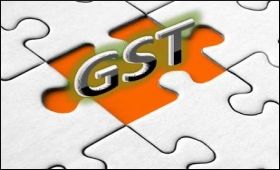|
|
|

|
India on way to re-elect government that launched GST
|
|

|
|
| Top Stories |
 |
|
|
|
SME Times News Bureau | 23 May, 2019
Bucking trends overseas, where governments lost elections after
launching the Goods and Services Tax (GST), India appears to have voted
overwhelmingly for the ruling party, suggesting that the new indirect
tax regime has been widely accepted as a major economic reform.
The latest trends show BJP and its alliance partners leading in 343 seats out of 542 Lok Sabha seats in contention this time.
Federal
governments had lost the elections in Malaysia, New Zealand and
Australia following the launch of the GST there. The popular anger in
these countries was primarily due to the resulting high prices of goods
and services after the tax reform.
"This is possibly the first
time that a large country has re-elected a government which introduced
GST," said a leading tax law expert here who did not wish to be named
because the issue involves politics.
Listing out the reasons for
the thumping majority projected for the government which brought in the
structural tax reform, the expert said that Prime Minister Narendra
Modi's government had managed to keep inflationary pressure in check and
had responded proactively to the demands of industry.
"In many
countries where GST was launched, the governments promised that whatever
difficulties faced on this count would be resolved within a year, while
the time difference between elections and GST roll-out was less than a
year.
"Here (India), the time difference between the GST
roll-out and election has been about two years," another top GST
consultant said, wishing not to be named.
The Modi government
launched GST on July 1, 2017. The biggest indirect tax overhaul has
resulted in the lower cost of most goods and services, while making
Indian economy globally competitive.
The government has effected
dozens of changes in the new tax regime and cut taxes across hundreds of
items over the last two years to make it industry-friendly. More
changes are on the cards to further simplify the processes.
Now
that the NDA is all set to return to power, there are expectations that
necessary changes in the GST law, as well as rules, would be expedited.
"Given
the loud mandate of the government, we expect the compliance burden
would be eased further and the sectors which were left out earlier would
be included in the new regime.
"Further, the government would
create a conducive environment for the service sector which has been a
big strength of the Indian economy," said Amit Kumar Sarkar, Managing
Partner, Versari Advisors India LLP.
|
|
|
| |
|
|
|
|
|
|
|
|
|
|
|
|
|
|
| |
| Customs Exchange Rates |
| Currency |
Import |
Export |
US Dollar
|
66.20
|
64.50 |
UK Pound
|
87.50
|
84.65 |
Euro
|
78.25
|
75.65 |
| Japanese
Yen |
58.85 |
56.85 |
| As on 13 Aug, 2022 |
|
|
| Daily Poll |
 |
 |
| PM Modi's recent US visit to redefine India-US bilateral relations |
|
|
|
|
|
| Commented Stories |
 |
|
|
|
|
|
| |
|